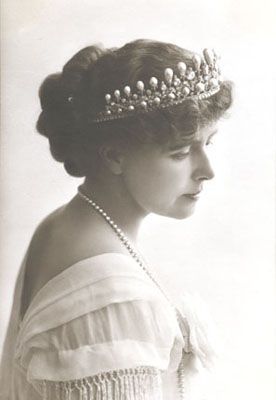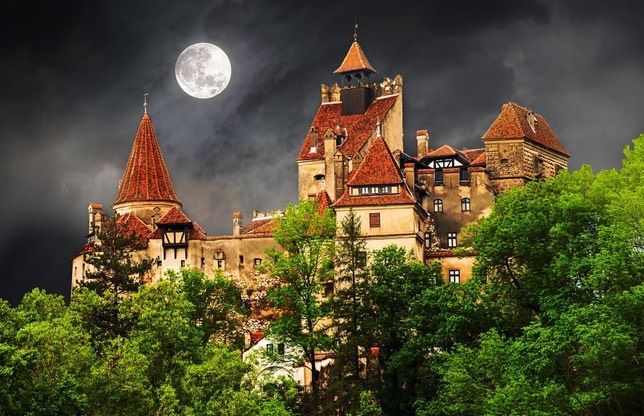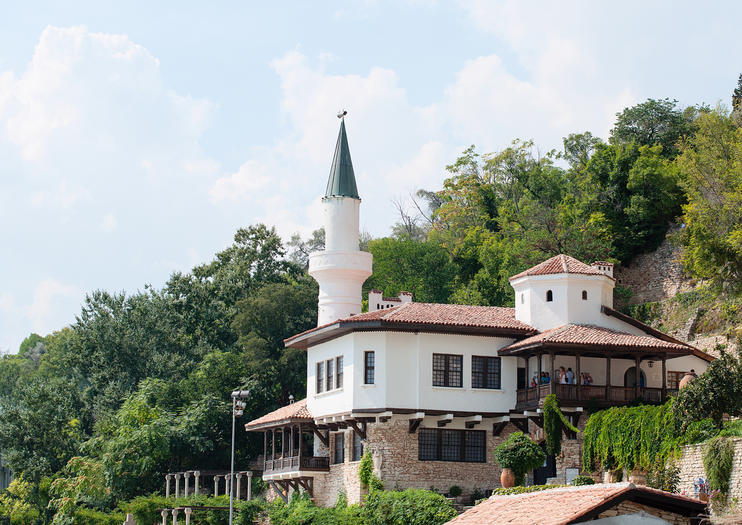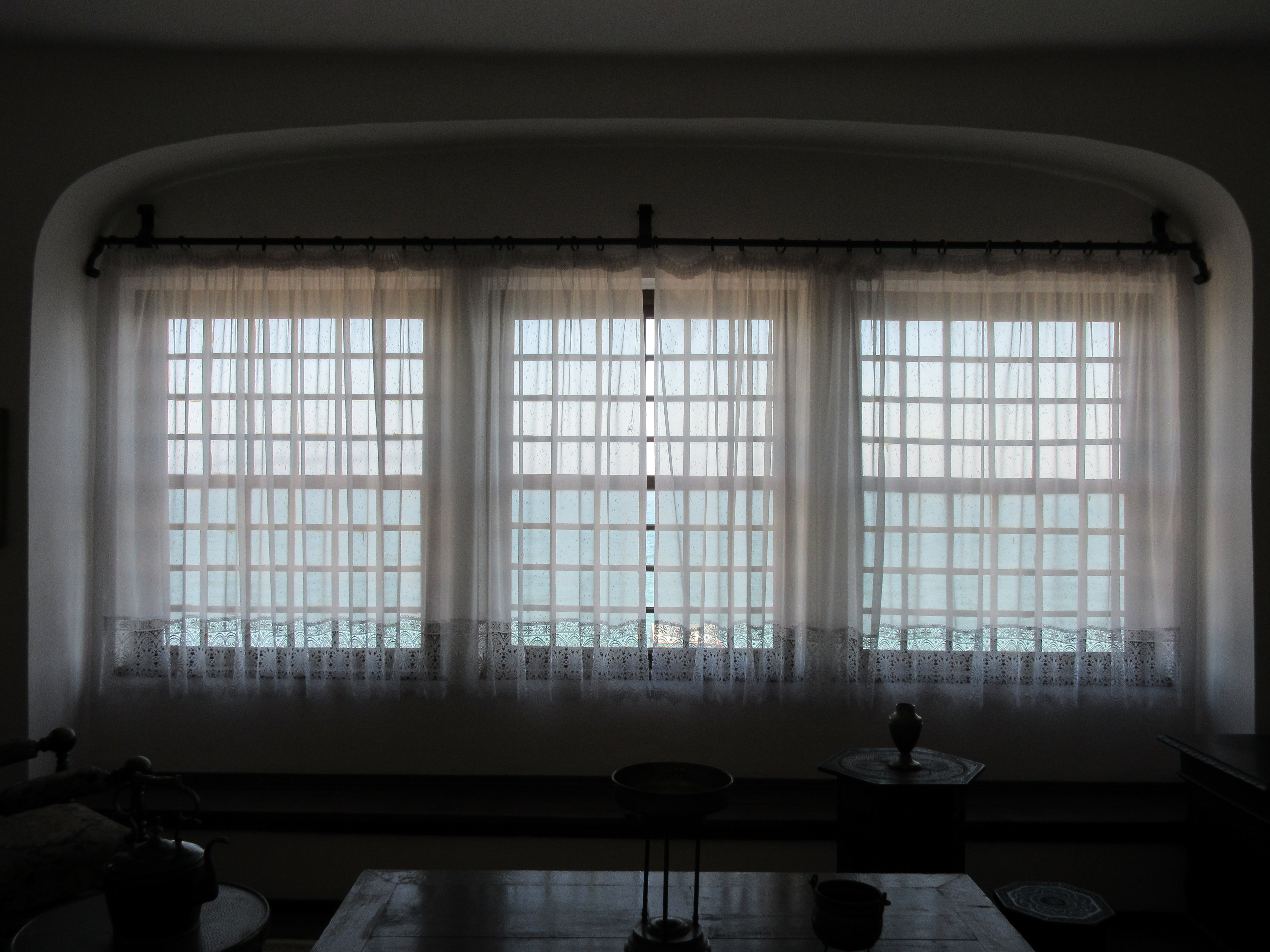
A Royal Seascape
|
This
is not a biography of
Queen Marie of Romania, it would really take a life for such writing, and I'm
not
even qualified. Instead, this is a mentioning of some facts
about her, simplified at best, most of them rather unusual,
that
lead to a photograph. Sometime
in 1893, at the young age of 18,
Princess Marie of Edinburgh, granddaughter of England's Queen Victoria
and of
Emperor Alexander II of Russia, tied her fate to that of German Prince
Ferdinand of Hohenzollern and to that of Romania, the country on whose
throne
Ferdinand ascended in 1914 making Marie, already a mother of six, Queen
Marie
of Romania. Marie
had the kind of influence on her
weak-willed husband Ferdinand that few, if any Queen-consorts ever
had.
Let's say, in modern terms, that, in their family, while King Ferdinand was wearing the crown, Marie
was the
one wearing the pants. This led historian A.L.
Easterman
to later write that "it was not Ferdinand, but Marie who ruled  Marie of Edinburgh – Queen of Romania That
remark was made after Marie came back
from the 1919 Paris Peace Conference where, as special envoy of King
Ferdinand,
she successfully negotiated, obtaining the international recognition of
the
"Greater Romania" thus doubling the country's territory and
increasing its population by 10 million! She also returned loaded
with
supplies for  The Bran Castle - Bran (German Name: Törzburg) Is a Commune in Braşov County, Romania She
loved the castle, immediately started
restoration work on it that lasted seven years, but, albeit impressive
and full
of history, the Two
Italian architects worked with Marie to
build this place to be exactly how she wanted it, and a full-time Swiss
gardener/botanist supervised the planting of the extensive garden (6.5
Ha or 16
Acres) itself a work of art, and so well done that today it was renamed
and
re-purposed as the University of Sofia Botanical Garden. She loved the
place so
much that in her will she directed that, while her body was to be
interred at
the royal cemetery, her heart was to be separated and kept in the small
Orthodox chapel, Stella Maris, she had built, in Byzantine style, near
her
beloved Balcic palace. The Summer before last I finally had the time to trek to Balcic, and the opportunity to
see the
"palace", actually a slightly larger than usual villa, but one that
speaks at length about Marie.  Facing the Sea, the Beachfront Balcic Palace of Queen
Marie of Romania
This
was Marie's place. Her personal
space. King Ferdinand had already passed when she had her Quiet
Nest" as she called, built, and none of his successors were ever
invited there! Because she knew the local populace to
include many or mostly Moslems, to be "inclusive" she even had a
minaret-like structure built attached to the villa. There are
servants quarters and
visitors suites nearby, and, in the palace itself, some service and
utilities
rooms and even a small chapel, but there's only one large
livingroom-bedroom in the whole palace, and only one bed, and
a single bed at that - Marie's bed. While the room itself is
large,
her
simple, single bed is set in the corner of a small alcove, two steps
higher
than the rest of the room, looking more like a nun's cell, complete
with a crucifix on the
wall. But
on the wall opposite the alcove,
dominating the 3-d story room, some 14 meters above the sea level, is
the
"raison d'ętre" of the whole thing. A set of three, large,
double-hung windows, paned like the windows of a great old sailing
ship,
opening towards the sea, and nothing but the sea and the sky! I
stood in
the middle of the room, camera at eye level, pointing straight towards
the
window and the sea beyond it, and, because of the long parallax, the
sea
horizon line was, surprisingly, at eye level too! In fact, the
horizon
line was hidden by the window sash, which is also, turns out, at (my)
eye
level, but that didn't lessen the experience. And the  The Black Sea, Seen Through the Queen's Room Windows And
one more thing, for the record. In
1926 Queen Marie of Romania had the opportunity to journey to, and
through
parts of the "...both my children and
I have but one
dream: to return! To return to that stupendous New World, which makes
you
almost guiddy [sic] because of its immencity, [sic] its noise, its
striving,
its fearful impetuous [sic] to get on, to do always more, always
bigger,
quicker, more astonishingly a restless, flaring great world, where I
think
everything can be realized ... I know, as long as I live, breathe and
think,
the love for America will beautify my life and thoughts ... Perhaps
Fate will
allow me one day to go back to America." I'll
leave you with these thoughts.
__oOo__
Information and photos from the Internet,
Text © Copyright - The Blind
Stork, 2022
|